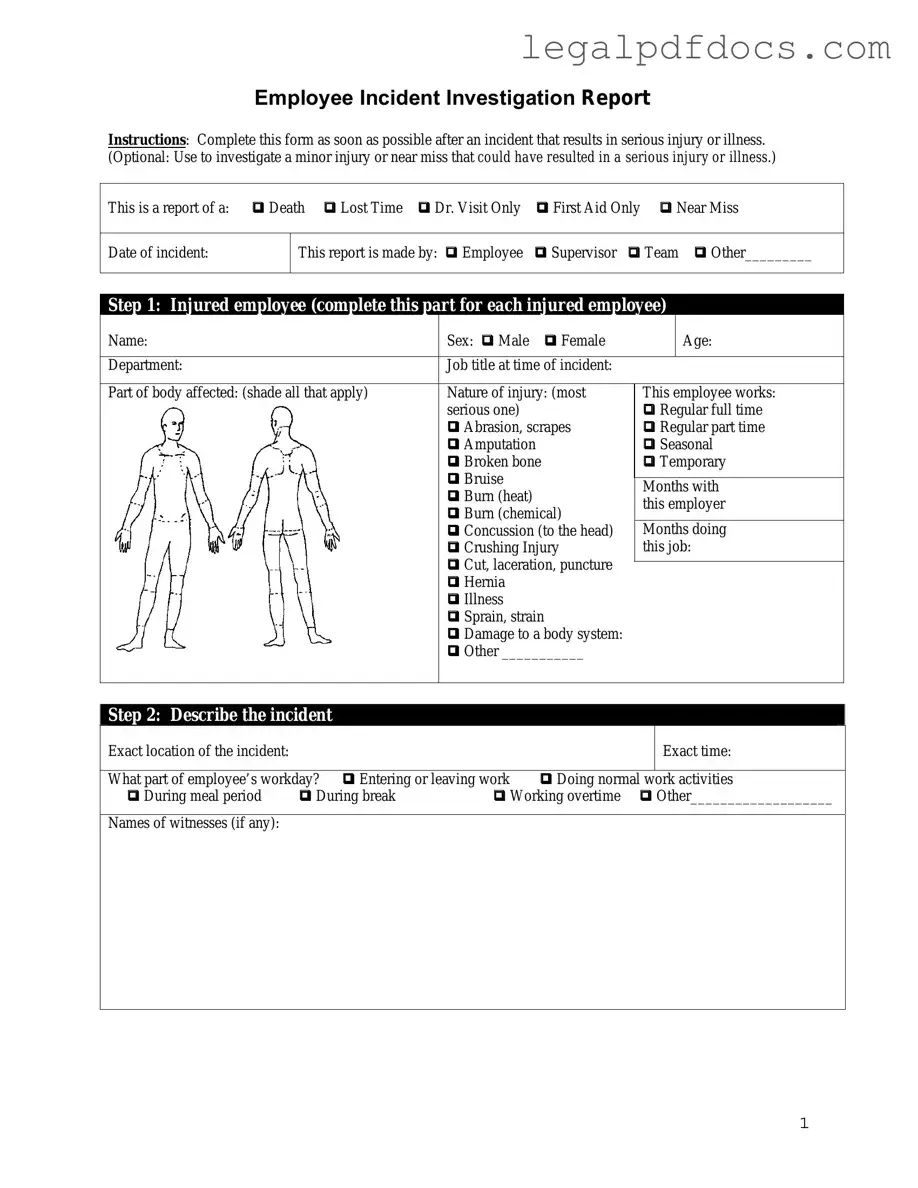Fill Out a Valid Employee Accident Report Template
The Employee Accident Report form is a crucial document used to record details of workplace accidents, ensuring that incidents are documented accurately for safety and compliance purposes. This form helps employers understand the circumstances surrounding an accident and aids in preventing future occurrences. It is essential for all employees to fill out this form promptly after an incident to facilitate a thorough investigation and appropriate response.
To complete the form, please click the button below.
Open Employee Accident Report Editor Here
